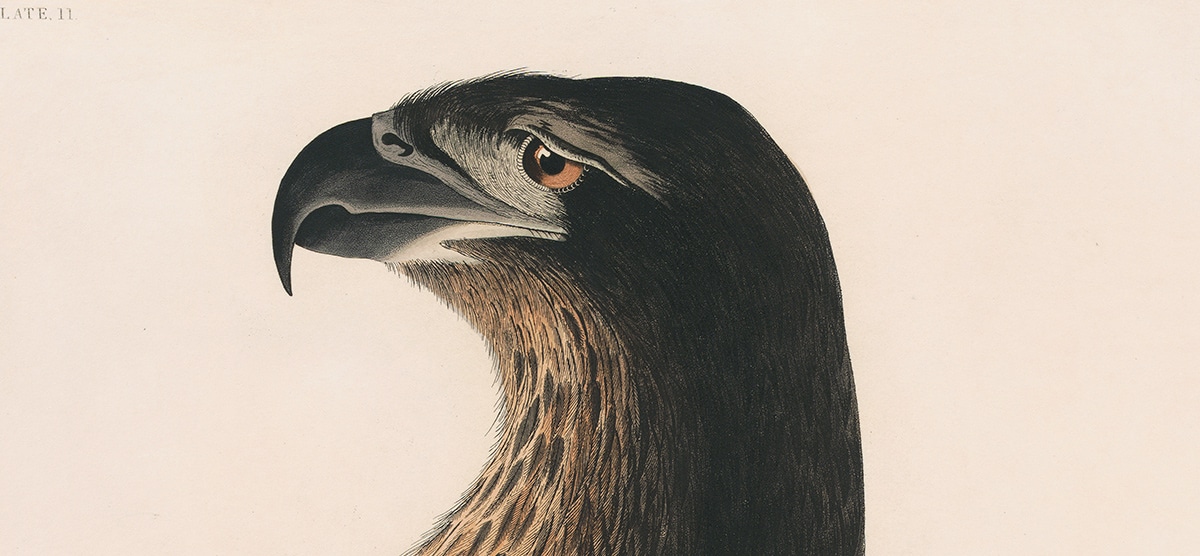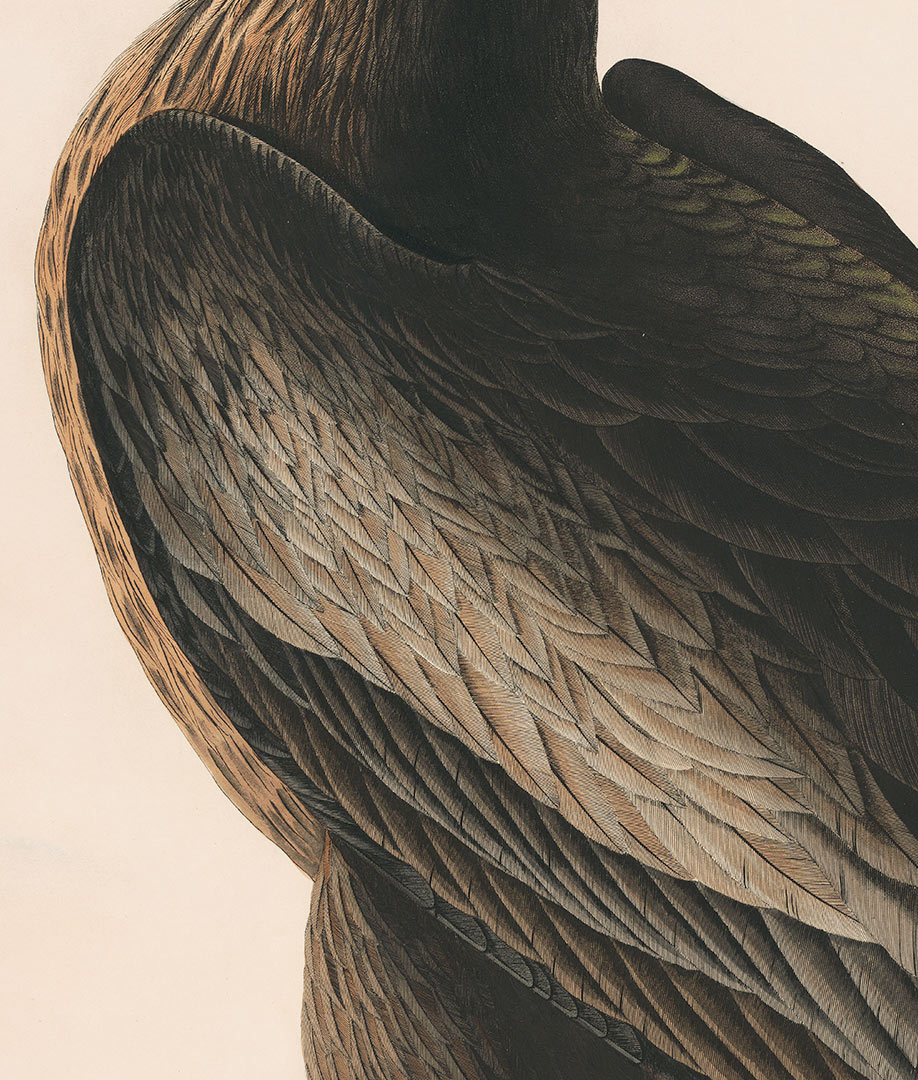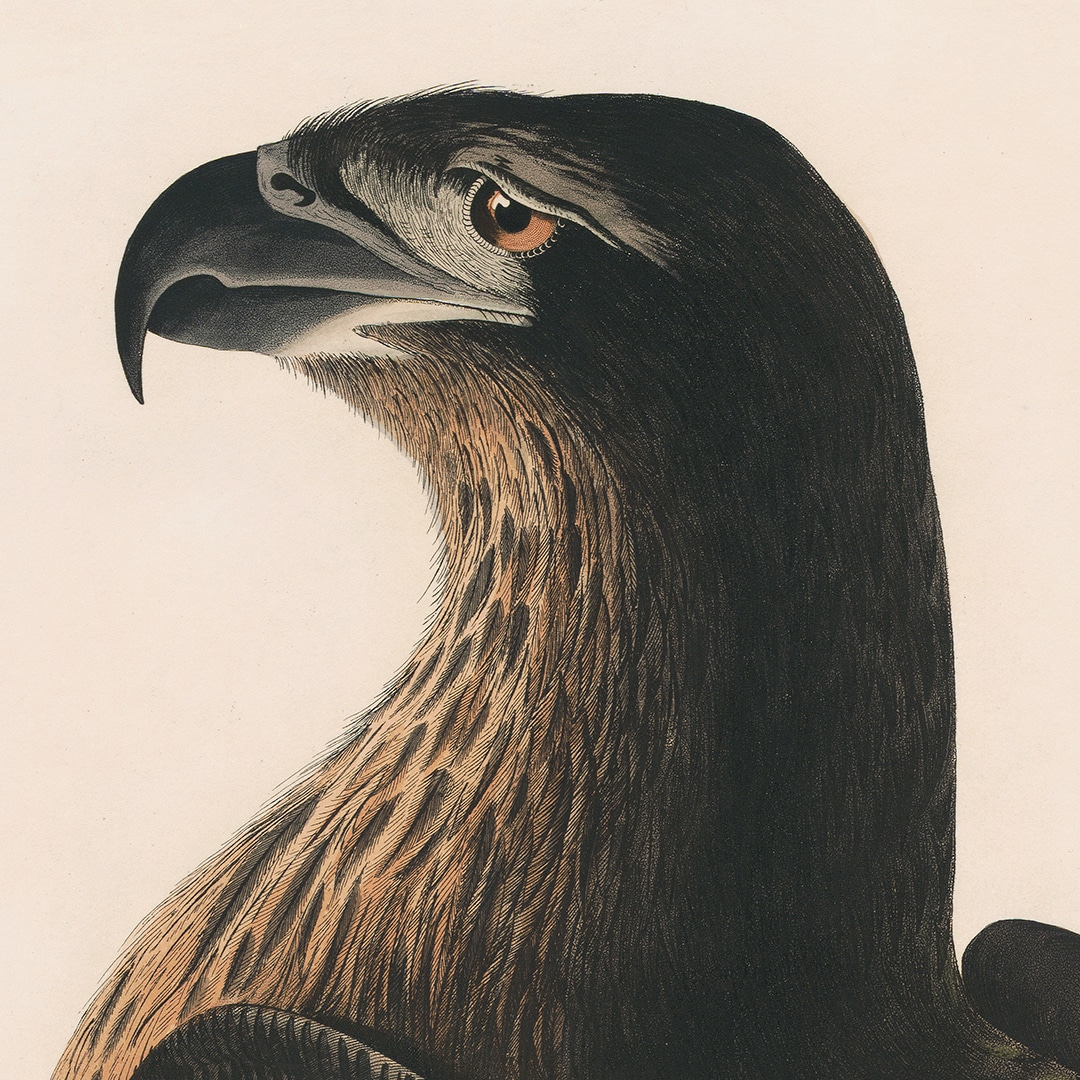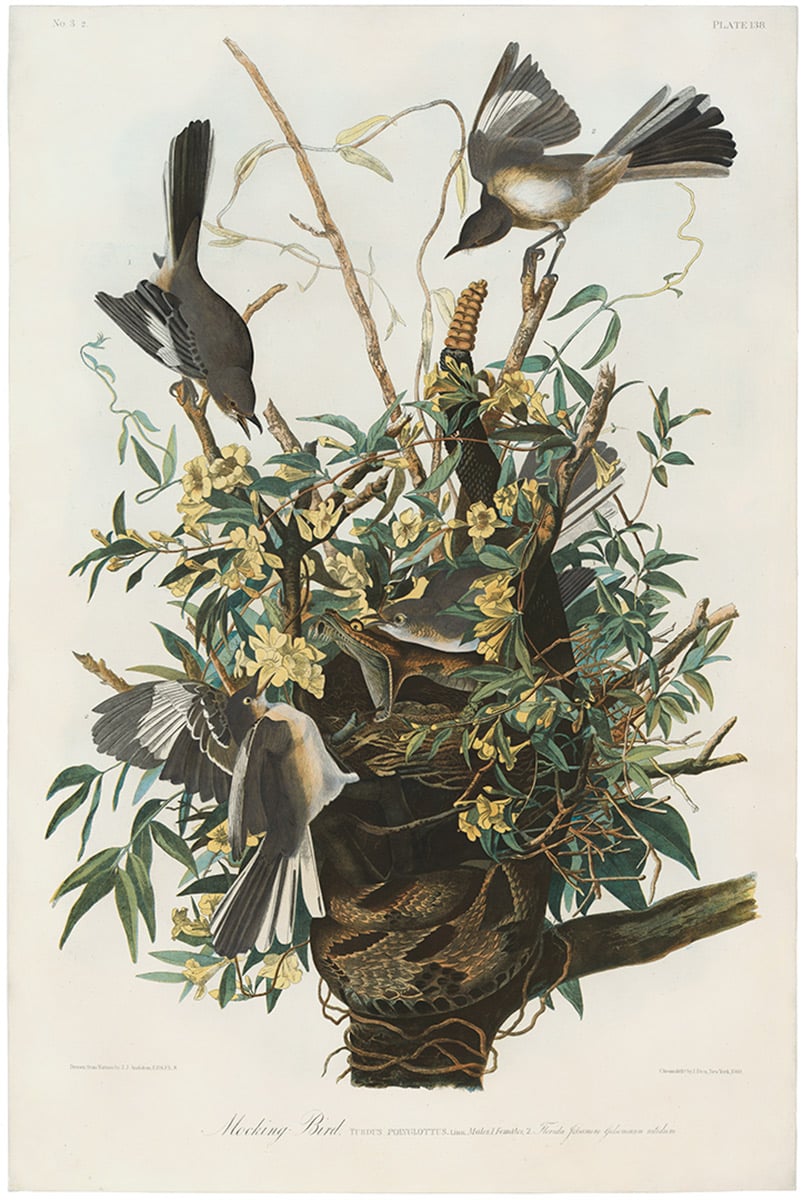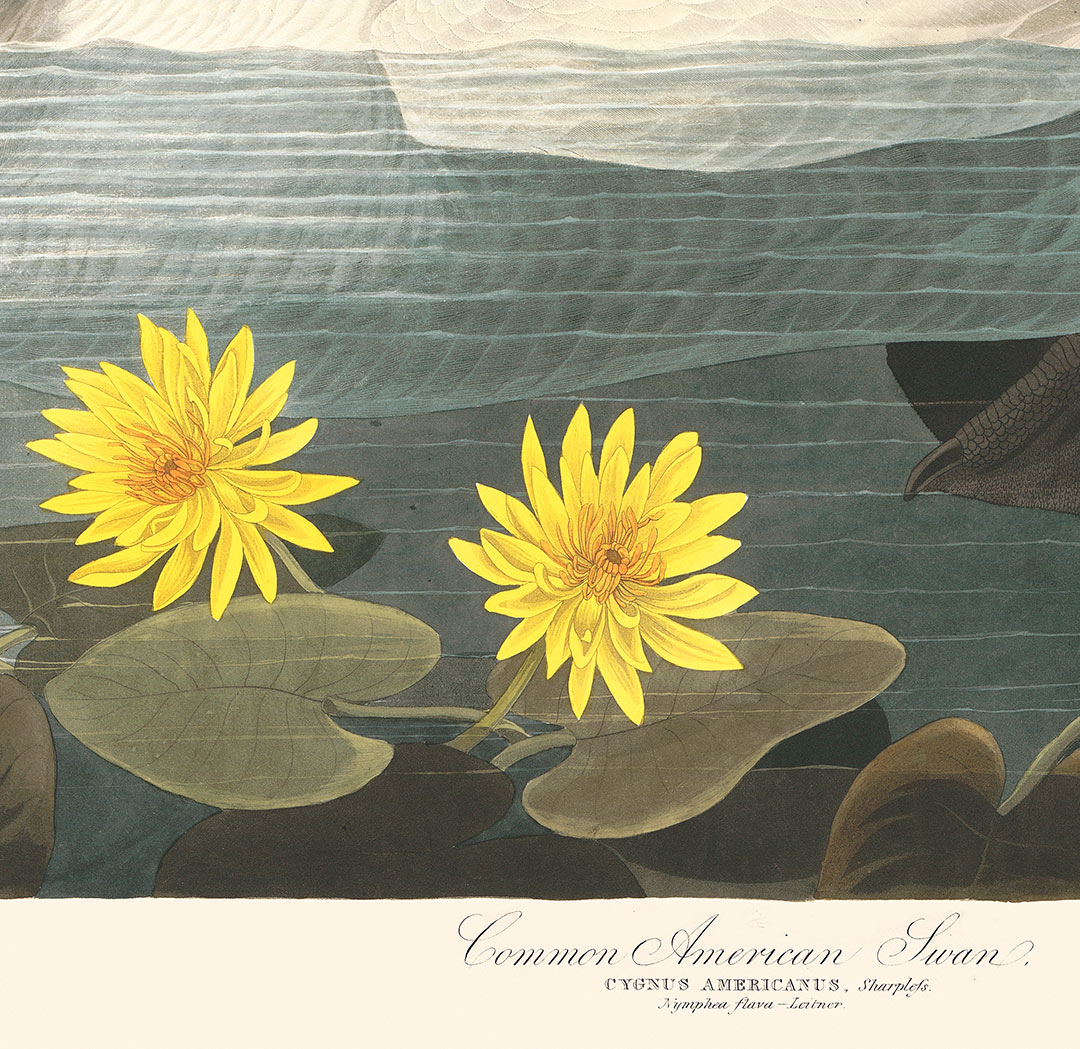Audubon Prints
The Controversy Surrounding Audubon’s ‘Bird of Washington’
A consideration of the complex and convoluted history of Audubon’s unidentified rapacious species
Among Audubon’s 435 engravings depicting approximately 443 species, the Bird of Washington remains one of the most opaque and contested prints from The Birds of America. As one of Audubon’s earliest aquatint engravings printed by Robert Havell, the sheet displays a grand specimen purporting to be the ‘Bird of Washington.’ However, the complexity of this print surfaces as Audubon seems to have been one of the few individuals ever to witness the regal species. Consequently, this print has heralded decades of debate amongst ornithologists, naturalists, and art historians who, in one way or another, attempt to admonish, uphold, or reconcile the existence and representation of Audubon’s specimen. Amongst a slurry of written accounts of sightings as well as public accusations of fraudulence, this print has perhaps the most convoluted history of all Audubon’s work. It is, therefore, one of the most historically intriguing pieces because of the cross-disciplinary literature generated concerning the print’s (and the bird’s) existence.
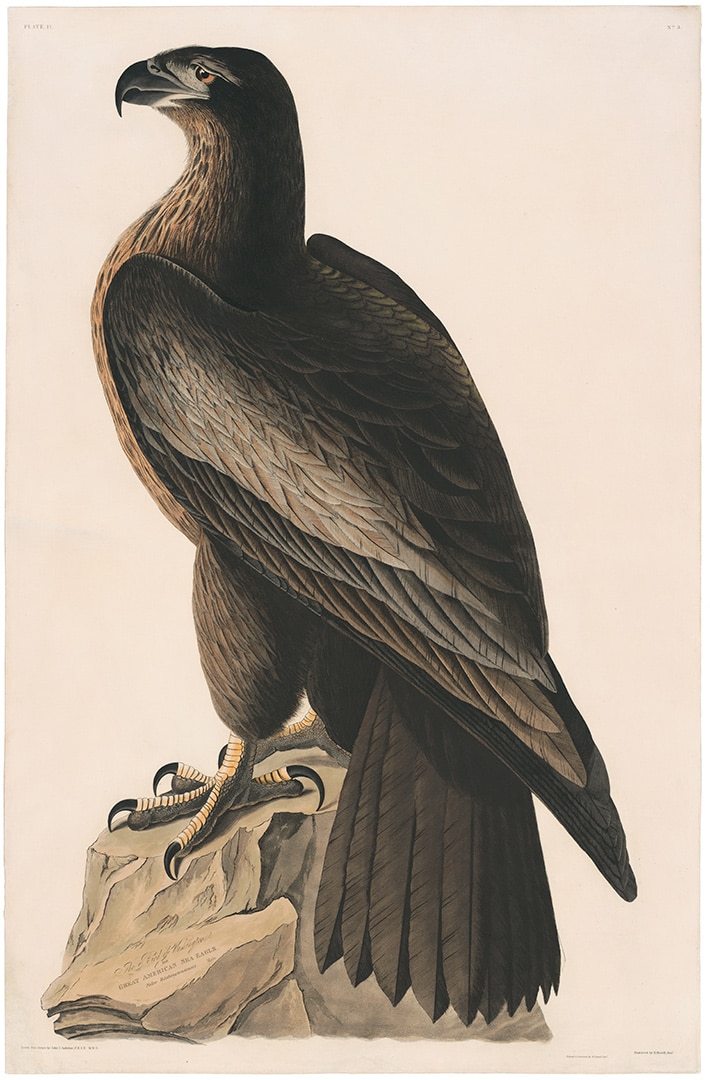
Audubon Havell Ed. Pl. 11, Bird of Washington
Hand-colored aquatint engraving, 1827-1838
Measuring 3 feet and 7 inches tall, the monolithic eagle occupies the entirety of the double-elephant folio sheet of Whatman paper. In this print, we are provided with a three-quarters dorsal view of the bird that looks off as though keenly watching something far more interesting than, and undoubtedly superior to, our presence. Rendered in subtle shades of brown and accented with hints of blue and yellow, the bird reads as a stately sentinel intently poised on its rock-hewn station. Depending on the plate state, the title announcing the bird’s name, “The Bird of Washington or Great American Sea Eagle,” is located on the bird’s rocky support, or just beneath the printed image as is typical of Audubon’s work. What is more unusual about the print is the lack of animation in comparison to his other prints. Rather than cavorting, frolicking, or gracefully stalking, the bird is entirely still without a feather out of place. This stern austerity caused several of Audubon’s critics to speculate as to whether or not the bird was drawn from an actual specimen, or whether it was a mythical concoction.
According to Audubon’s records, he first witnessed the Bird of Washington in February of 1814, but it was not until a few years later that he acquired a specimen in Kentucky from which the print was made. Recognizing it was an unidentified species, Audubon christened it the ‘Bird of Washington.’ Initially, many ornithologists were doubtful of the novelty of the bird and concluded that Audubon had merely mistaken a juvenal bald eagle with its first-year brown plumage for a new species. However, Audubon was familiar with the trajectory of a bald eagle’s plumage coloration and was confident that what he had witnessed was not this. Moreover, Audubon’s notes indicate that this eagle was different from the bald eagle in its size, habits, and scutellation of its tarsi.
To begin with, Audubon notes that the Bird of Washington measured 3 feet 7 inches tall, with a wingspan of 10 feet and 2 inches, which significantly superseded the dimensions of any known North American rapacious bird. Additionally, Audubon suggests that this new species nests on rocky cliffs, which is contrary to the tree-nesting habits of bald eagles. Lastly, the depiction of the birds’ cere and scutellated tarsi are also distinct from those of a bald eagle, juvenal or otherwise.
However, Audubon did have a great number of critics who, fueled by their friendship with Alexander Wilson (Audubon’s professional competitor), sought to defend their friend by opposing Audubon at every turn. For example, in response to Audubon’s illustration of the Mockingbird, which depicts a contingent of mockingbirds defending their nest against the onslaught of a rattlesnake, Audubon’s “deprecators assailed him on this, arguing that rattlesnakes cannot climb trees” (Maruna 2006, 141). However, subsequent observations of the New World reptile proved that rattlesnakes do occasionally climb trees. Thus, in this instance, Audubon was not exercising his artistic license by creating a fictitious tree-born battle, but rather he was merely rendering nature as he saw it.
Likewise, Audubon endured lifelong accusations from the botanist community who accused him of fabricating the yellow water-lily found, which he termed the Nymphaea lutea, found in Pl. 411, Common American Swan. “Only decades later in 1876 was his defiant refusal to retract his depiction justified by the “rediscovery” of the long-lost plant in the Florida Everglades by botanist Mary Treat.” (Maruna 2006, 141). These tests of Audubon’s integrity conclude favorably for him, and one is prompted to wonder if questioning his Bird of Washington will render a similar result.
However, as many authors were anxious to point out, there are a plethora of potential motives that could have allured Audubon into fabricating a fictitious species. Perhaps most overtly, discovering a new species would act as a significant selling point for any ornithological publication, and by proxy heighten the renown of its discoverer. It is entirely possible that Audubon has such business-minded motives, but then the question becomes to what standard are we to judge his (and other artists) art? Typically, the Art World is entirely hospitable to illusion, fantasy, and non-reality-based work. However, the realm of science does not share this fondness for invention. But whether or not Audubon had this dubious business strategy in mind, we can only speculate.
On the other hand, the misidentification of a known species for a new one is well within the realm of possibilities especially when one takes into account the power of motivated perception in coloring the way we perceive the world. In the introduction to his 2nd edition of The Sibley Guide to Birds, renowned American ornithologist and artist David Allen Sibley cautions the reader to be wary of the power of their own expectations when birdwatching. He states “Expectations make it very hard to notice the unexpected…” (Sibley 2014, x). In this statement, Sibley warns us that expectations are likely to skew our perception which may lead to the misidentification of a bird. It is not unfathomable that a similar situation may have befallen Audubon when he saw the great bird and, in his excitement to discover the undiscovered, misidentified it as a new species.
After years of tenuous alleged sightings, much cynicism from the ornithological community, and no extant specimens, the bird was ruled fictitious. Today we are left to wonder at the circumstance by which Audubon was prompted to render the Bird of Washington. Whether rooted in verism or part of an elaborate scheme, the bird remains aloof, with its back to us and its eyes pondering something outside the picture frame.

